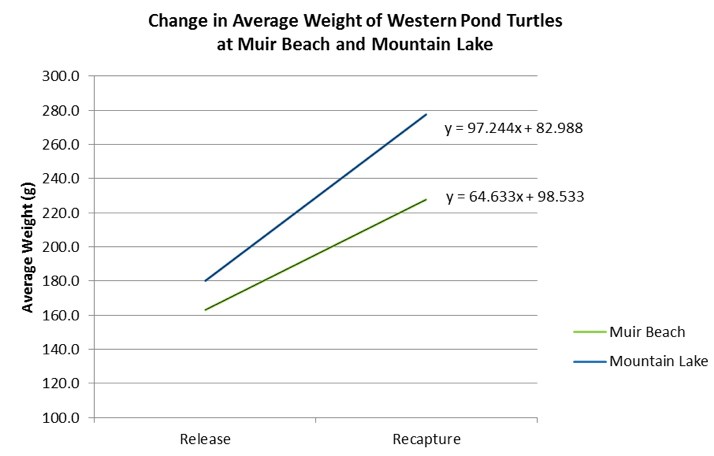Last updated: September 28, 2018
Article
Western Pond Turtle Monitoring at Muir Beach Reveals Interesting Growth Trends

NPS and Presidio Trust
September 2018 - The month of August was turtle trapping season at Muir Beach. Six captive-raised western pond turtles released in 2017 were recaptured using modified catfish traps. Natural Resources Division staff and interns went out each weekday to check the traps and place new mackerel bait in their pouches. This year’s trapping success increased from 2017, when one turtle evaded trapping for three weeks!
Turtle trapping takes place every year at this site to gather growth data on the reintroduced turtles. This year, their average weight gain was about 65 grams (see graph). The graph also shows data from turtles part of a similar captive-rearing program in Mountain Lake in the Presidio.
Comparing the two sites, the Muir Beach turtles appear to have a slower yearly growth rate than those at Mountain Lake. However, there are many more turtles at Mountain Lake (16 recaptured, 55 total). A few of the Mountain Lake turtles also had tremendous growth (up to 180 grams in one year), which could bias the results.
Though the six turtles at Muir Beach are healthy and growing well, western pond turtles remain a species of concern in California. Habitat loss, increased agricultural activities, and the introduction of invasive species threaten their survival from southern California up to Washington State. Future Redwood Creek restoration projects, coupled with these western pond turtle captive-rearing programs, will hopefully aid in this species’ recovery. Contact Darren Fong to learn more.
